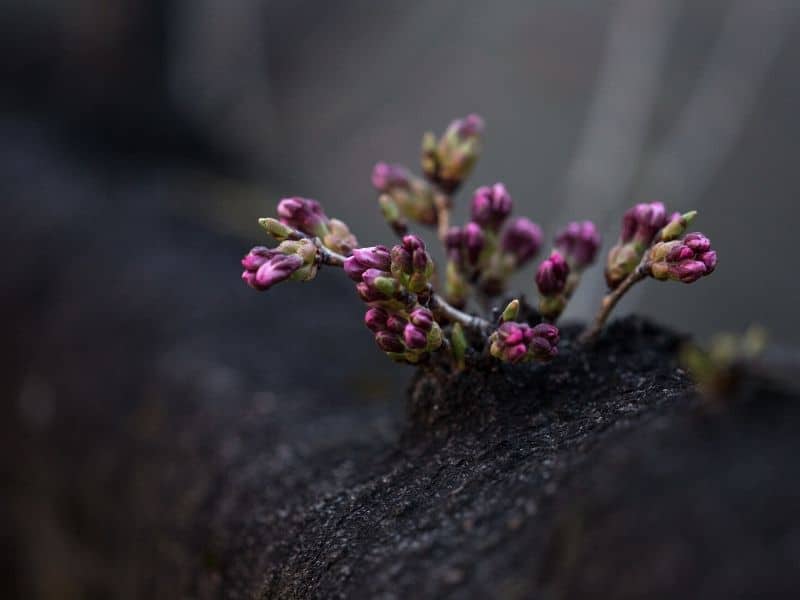I was gardening yesterday and thinking about trauma recovery. I enjoyed the sunshine and dug up one of my garden beds to prepare for spring planting. One corner of my garden has been home to an invasive flower species. I have wanted that space for vegetables and decided it was time to dig it up.
I started digging. At first, I plucked the leftover vegetation still visible at the top of the soil. I dug deeper. I started pulling up the roots. The more roots I dug up, the more roots became exposed. I realized how deep those roots went and how vast the system was. The deeper I dug, the more roots were there. I was amazed at the intricate and solid web of roots that supported the flowers. It was huge and difficult to uproot.
I started contemplating how this was a perfect therapy and trauma recovery metaphor. When we begin therapy treatment, all we see is what is on the surface. The presenting issue on the surface is often what brings us to therapy in the first place. It is the behaviour we wish to change—overworking, drinking too much, or challenges in our career. The issue that brings us to therapy is the plant’s vegetation above the surface.
Exposing our Roots – Trauma Recovery
In therapy, we begin to dig a little deeper. What are the roots of the problem? After some therapy treatment, we start to see the connection between what we are doing now and the historical reason why this behaviour makes sense. We begin to uncover the surface roots of the problem that lie just above the surface. We start to see how our behaviour now might make sense given the context of our early experience, but we can see that this behaviour still causes problems. These surface roots may be old relationship wounds, traumatic experiences in the workplace, or isolation and loneliness.
The more we dig into therapy, the more we become aware of how deep those roots go. We see how our childhood experiences shaped our dysfunctional behaviour, and old trauma and difficulty underlie our present-day struggles. It is the same with trauma recovery; the deeper we start to dig, the closer we get to the ‘core trauma.’ The core trauma is what happened to us and prompted us to put down the roots of dysfunction in the first place. Sometimes, it’s not just one thing but a sustained pattern of relational trauma – a parent who was neglectful, a childhood spent in loneliness, or a parent who treats us as an extension of them, to name but a few possibilities.
Types of Trauma
For some, the root of our issue is a ‘big T’ Trauma: sexual and physical abuse, neglect, emotional manipulation, or death of a parent or caregiver. For others, it is ‘little t’ trauma: consistent lack of emotional responsiveness from our parents, bullying, emotional manipulation, overindulgence, or helicopter parents. Each type of trauma manifests differently, but all are damaging. These are the deepest roots of all, the hardest to pull up.
Sometimes, in therapy, we start to feel worse before we feel better. This plant is a perfect analogy. When we first begin to dig, we expose bad feelings—feelings we had previously spent a lifetime shutting down and covering up with more topsoil. When we first expose those terrible feelings, we begin to embrace reality. We let go of the sparkly decoration and flowers of dysfunctional behaviour that were hiding these darker roots. It takes some digging in therapy before we uncover the root system’s vastness.
After a time, we uncover the underlying trauma driving our current behaviour. We can begin to pull up those deep roots of trauma and emerge into a new version of ourselves.
Eventually, we also start to uncover some of our power. We experience that we have choices now in how we feel or behave that we didn’t have as kids. We start to stand in our grownup power to choose differently. This power emerges the more we release these past wounds. The more we feel and release those old feelings, the more we create space for new options.
A New Version
Pulling out the last of the plant’s roots, I sat back and appreciated my handiwork. In front of me was beautiful, freshly tilled soil that was now ready for new seeds – productive seeds that would produce vegetables.
In trauma recovery therapy, it is the same. After working through those early traumas and feelings of grief, rage, and loneliness, we reveal new and fertile soil to plant seeds of self-love, connection, and emotional freedom. We become freshly tilled and ready to flower a new version of ourselves – prepared for the life we want.
post-script
The following year, I went to this same patch of ground. My potatoes had grown, but in the corner of the garden bed, new sprouts were also sprouting from the old plant I had worked so hard to dig up.
This is also a perfect metaphor for the process of therapy. Sometimes, after all our hard work, we find ourselves in situations and notice old behaviour patterns emerge. Life and therapy are not a game of perfect. It is about constant change and a willingness to continue to practice new ways of being in the world. In these moments, we pluck out the old behaviours when we notice them – pluck out the new growth of the old plant and continue to plant potatoes.

